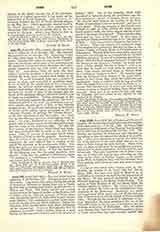

John VII, POPE (705-707).—The year of his birth is unknown; d. October 18, 707. Few particulars of his life remain. Like many other popes during the period of Byzantine influence in Rome, John was a Greek. Sprung from a distinguished family, he was the son of Blotto, and Plato. The latter carried out various restorations in the imperial palace on the Palatine hill in Rome, and, for the sake, perhaps, of living where once his parents had lived, John after he had become pope (March 1, 705) constructed a palace ( episcopium) near the church of Sancta Maria Antiqua. Before his elevation, John was the rector of the papal patrimony on the Appian way. It was in that capacity that he erected a memorial “with a broken heart to a most loving and incomparable mother, and to the kindest of fathers” (687). One of the churches which John beautified or restored during his pontificate was the aforementioned church of Sancta Maria Antiqua. “He adorned with frescoes the basilica of the Holy Mother of God which is known as the Old”, and gave it a new ambo. When the remains of this church were brought to light in 1900, among the many figures found upon its walls, one with a square nimbus is supposed to represent John himself. There was also then discovered the base of his ambo. It bore upon it inscriptions which proclaimed him to be “the servant of Mary”. John also erected a chapel to Our Lady in St. Peter’s. When this oratory was destroyed, some of his mosaics were preserved, and may be seen in the Roman Church of Sancta Maria in Cosmedin and in other places. Though John was a man of learning and eloquence, and though he was remarkable for his filial affection and piety, he was of a timorous disposition. Hence, when the fierce Emperor Justinian II sent him the decrees of the Quinisext Council, “in which were many articles against the See of Rome“, with a request that he would set forth what he approved in them, John simply returned them, as though there were nothing to condemn in them. He received back from the Lombard King Aripert II the papal patrimonies in the Cottian Alps, which the Lombards had confiscated. John is credited with having prevailed upon the Anglo-Saxon clergy resident in Rome to renounce their secular style of dress, and with having written to those in England bidding them follow this example. John died in the palace he had built near the Palatine, and was buried in the oratory he had erected in St. Peter’s.
HORACE K. MANN

